EUR traders are to have their hands full today, as besides the fundamentals regarding the war in Ukraine, a number of high impact financial releases is due out and could affect EUR’s direction. We make a start with France’s final HICP rate for February which on a year-on-year level is expected to remain unchanged if compared to the preliminary release and if so would confirm the acceleration of the headline HICP rate in the second largest economy of the Eurozone for February. From Germany we note the release of March’s ZEW indicators.
The current conditions indicator is expected to drop deeper into the negatives, implying that the conditions on the ground are deteriorating substantially and economic sentiment indicator is expected to drop indicative of how pessimistic investors have got about the outlook of the largest economy in the Zone since the start of the year. Last but not least we would also like to note the release of Eurozone’s industrial production growth rate for January, which is expected to slow down and if so would be an additional bearish sign for EUR traders. On the monetary front we note that ECB President Christine Lagarde is scheduled to speak in Berlin during the American session, and we would expect a dovish tone to prevail given the uncertainty for the recovery of Eurozone’s economy, stemming from the war in Ukraine. Such a tone could also weigh on the common currency should it actually surface in MS Lagarde’s speech.
From the US today in the American session we note the release of the US PPI rates for February. The PPI final demand rate is expected to accelerate and if realized could provide some support for the greenback as it would be an additional sign of intensifying inflationary pressures in the US economy. Also, from the US we note the release of the NY Fed Manufacturing index for March and its reading is expected to rise and if actually so could provide some support for the USD as it would imply a greater degree of economic activity for the manufacturing sector in the wider NY area. Pound traders are expected to focus on UK’s employment data for January. The unemployment rate is expected to tick down to 4.0% and the average earnings growth rate to remain unchanged at 3.7% yoy. Should the actual rates and figures meet their respective forecasts and be accompanied also by a rising employment change figure that dropped into the negatives in December, we may see the pound getting some support as the report would imply that the UK employment market is tightening. It should be noted that the release gains on attention as it is to be released just two days ahead of BoE’s interest rate decision. On a fundamental level besides the war in Ukraine we would highlight the situation in China as coronavirus is once again in the forefront threatening with disruptions of supply chains due to extensive lockdowns, thus weighing on the Aussie.
Cable was on a downward movement between the 1.3065 (R1) resistance line and the 1.2990 (S1) support level. We maintain our bearish outlook for the pair as long as its price action remains below the downward trendline incepted since the 23rd of February. The RSI indicator below the 4-hour chart is below the reading of 50, implying that the bears still have the advantage, while the lower Bollinger band implies that there is room for the pair to drop below the 1.2990 (S1) support line. Should the bears actually maintain control over the pair, we may see cable breaking the below the 1.2990 (S1) and aim for the 1.2890 (S2) support level. Should a correction higher be performed and the bulls take over, we may see the pair as a first sign of a changing trend breaking the prementioned downward trendline, the 1.3065 (R1) resistance line and aim for the 1.3170 (R2) level.
AUD/USD seems to remain in a sharp sell off as it’s aiming for the 0.7135 (S1) support line. We maintain a bearish outlook for the pair as long as its price action remains below the downward trendline incepted since the 11th of March. Please note that the RSI indicator below our 4-hour chart is below the reading of 30, which on the one hand confirms the bear’s dominance, yet on the other may imply that the pair has reached oversold levels and is ripe for a correction higher. Similar conclusions could be reached also by observing how the price action runs along the lower Bollinger band. Should the selling mode continue we may see the pair breaking the 0.7135 (S1) support line and aim for the 0.7050 (S2) level. Should buyers say enough is enough and take over, we may see the pair breaking initially the prementioned downward trendline, the 0.7230 (R1) resistance line and aim for the 0.7285 (R2) level.
Other highlights for today
Besides the financial releases allready mentioned we note also the release of Canada’s manufacturing sales for January, from the US the weekly API crude oil inventories figure and New Zealand’s current account balance for Q4. During tomorrow’s Asian session we also get Japan’s trade data for February.
GBP/USD H4 Chart
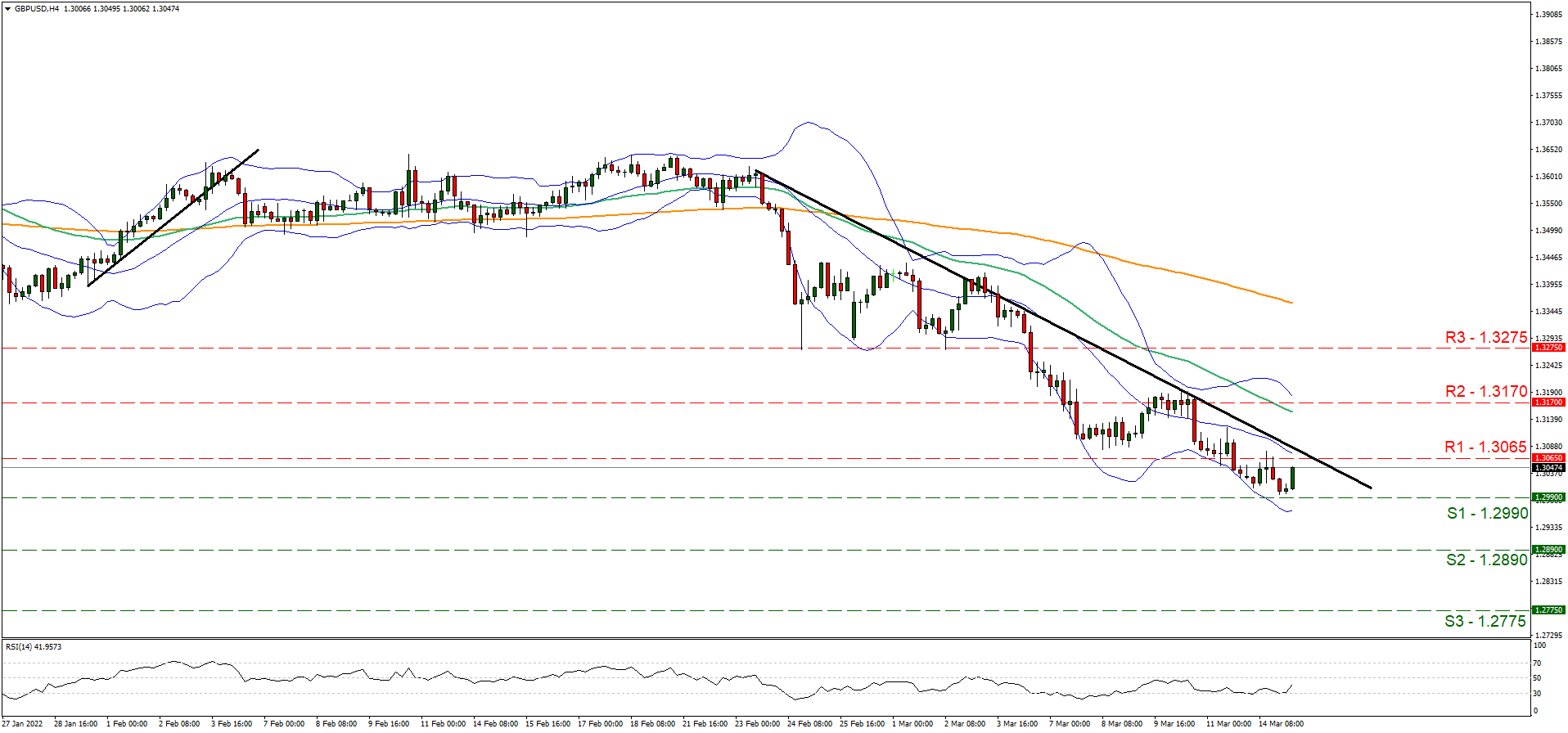
Support: 1.2990 (S1), 1.2890 (S2), 1.2775 (S3)
Resistance: 1.3065 (R1), 1.3070 (R2), 1.3275 (R3)
AUD/USD H4 Chart
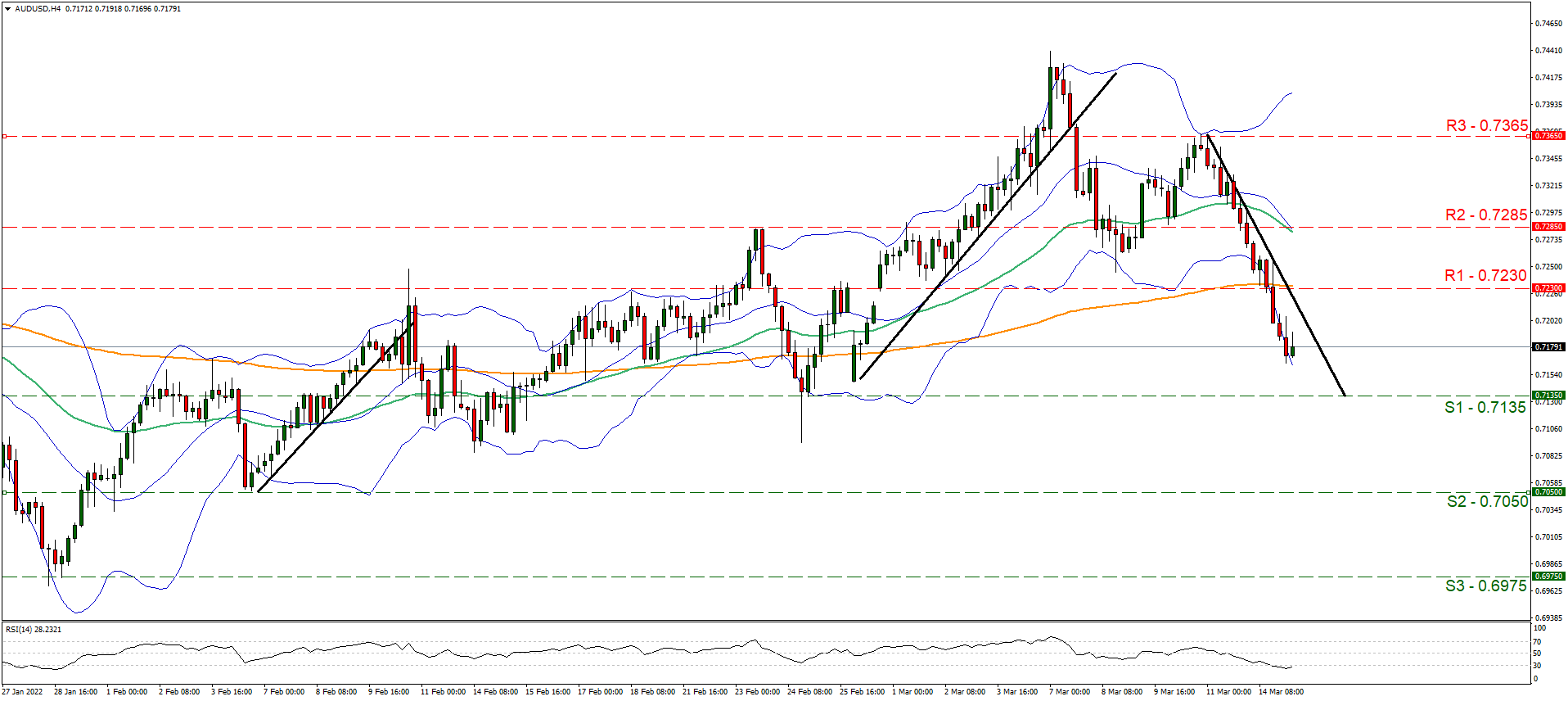
Support: 0.7135 (S1), 0.7050 (S2), 0.6975 (S3)
Resistance: 0.7230 (R1), 0.7285 (R2), 0.7365 (R3)

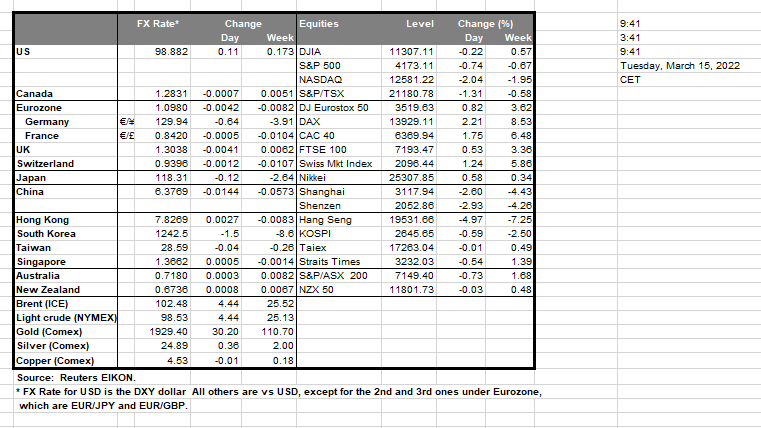
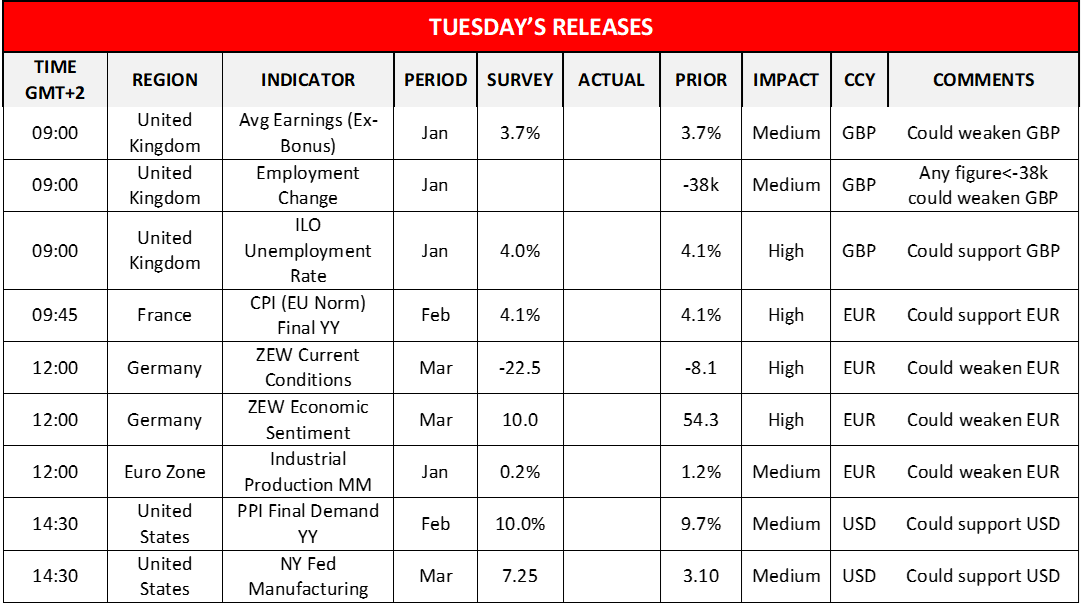
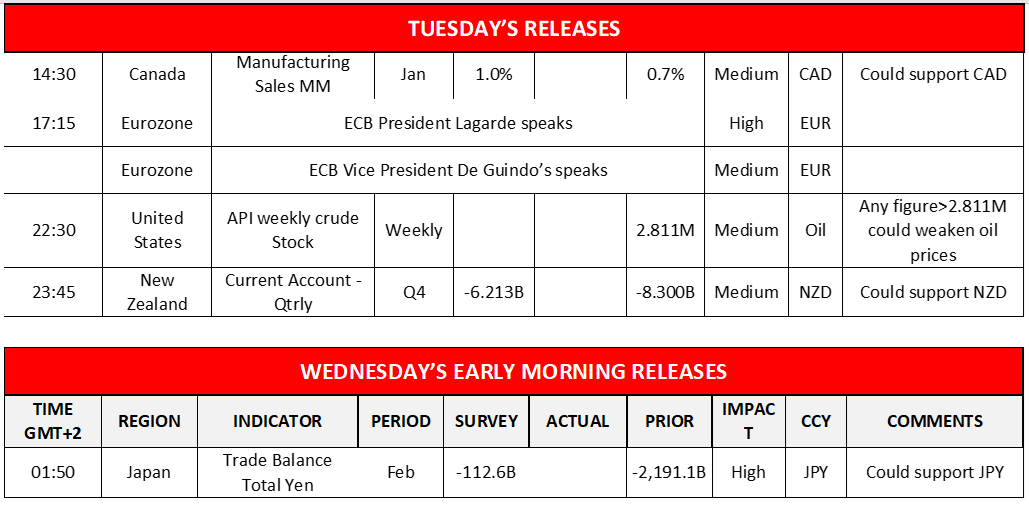
If you have any general queries or comments relating to this article please send an email directly to our Research team at research_team@ironfx.com
Disclaimer:
This information is not considered as investment advice or an investment recommendation, but instead a marketing communication. IronFX is not responsible for any data or information provided by third parties referenced, or hyperlinked, in this communication.













